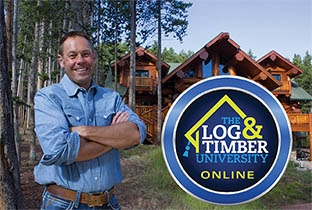
When living in a cabin community, you have a unique opportunity to contribute to local agriculture. Whether you partner with organizations committed to rural agriculture or start a local food network with community support, it can be a game-changer for cabin life and the environment around you. Learn how to implement community-supported agriculture to make the most positive economic and environmental impact, build bonds and keep shelves stocked with nutritious food for years to come.
The Benefits of Community-Supported Agriculture
Alternative food networks (AFNs) exist to improve upon the existing structures within the food industry. Many conglomerates and industrial food systems are unethical and ineffective, particularly when it comes to disseminating food supplies to remote areas. AFNs can help rural communities break away from standardized, commercial agriculture. This can support local economy, social awareness, health, animal welfare and the environment.
AFNs include concepts and processes like:
- Community-supported agriculture
- Farmers’ markets
- Fair trade
- Direct farm retail
- The slow food movement
Community agriculture can transform a cabin community into a self-sustaining operation. Initiatives like this are typically run by organizations that rely on volunteer work and community donations to keep things running. This can have social and economic benefits while improving the health of the community and environment. When sustainably run, community-supported agriculture can:
- Reduce water waste
- Increase biodiversity
- Protect local wildlife
- Reduce the need for harmful chemicals like pesticides
- Recycle plant waste into fertilizer
- Increase community access to fruits and vegetables
- Improve nutritional knowledge
- Increase physical activity
- Provide social and cultural connection
- Create a sense of autonomy and elevate self-esteem and independence
- Foster diverse, connected communities
- Reduce grocery expenses
- Add job opportunities
- Support the local economy
- Increase property values
It’s clear that community-supported agriculture is beneficial, especially for low-income and rural areas that otherwise may not have as much access to healthy foods. The art of cabin homesteading falls perfectly in line with this methodology. It focuses heavily on embracing tradition, saving water, preserving harvested crops, raising animals, enhancing sustainability and building community.
Partnering With Organizations
Community-positive organizations can help you get started when creating a local food network for your cabin community. Look for existing local non-profits, government agencies or community groups. It’s important to figure out if their values align with those of your community, including promoting food security and sustainable agriculture. To build relationships with these organizations, try to attend meetings, workshops and events. Then, you can talk with representatives about your idea for a food network and express interest in collaboration.
They can help you get started with funding and infrastructure. If you’d prefer, you can start your own community agriculture initiative. Just make sure that you have community support and are ready to deal with any challenges that come your way. You’ll have to find creative ways to pool resources and raise awareness in your community. Further, you will need proper access to water, land and ways to properly dispose of waste.
Emphasize Local and Heritage Brands
In the food industry, making purchases from farmers, artisans and local food producers can directly benefit the local economy and make your community less reliant on external mass-produced supplies. You can opt to purchase from companies that use traditional practices, regional crops, seasonal items and heirloom seeds.
You can also choose to buy from heritage brands. Heritage brands are companies that embrace tradition and legacy, focusing on crafting quality items. For instance, if you are investing in heritage workwear, you can opt for brands like Carhartt, Stetson or Wrangler – these items are known for their consistent quality, have decades of knowledge of how to make good products and can also be a great way to express your personal values and style.
Gardening, Raising Animals and Distributing Food
If you have access to viable land on your cabin homestead, you can work on building your own contribution to the local food network. You can start a garden where you produce crops. This can be a fun way to get exercise and learn about the different varieties of plants and their nutrition values. Consider erecting an organized garden shedon your property to house all your gardening needs. You can store seeds in old peanut butter jars or reuse pallets for storage to further your positive environmental impact. This can streamline your agriculture activities and make your contribution to local food initiatives more successful.
When you grow your own cabin food, also consider alternative methods like indoor vertical gardens to save space. However you choose to garden, you can harvest crops for your own use and either sell, donate or trade the excess. Consider setting up a “giving garden” where you can place excess fruits and vegetables for the community to take as needed. This reduces waste and contributes to a lively, well-fed community.
While plant-based foods are more environmentally friendly, you can also raise animals for meat, eggs and products. If you have the proper equipment and land, this can be helpful for not only your finances but the community’s resources. Regardless of your products, you can trade them or sell them with neighbors at farmers’ markets, local produce stands or even local grocers. You can even utilize online platforms like Sharefood.in to spread the word and connect with local consumers.
Moving Forward
Ensuring food security for your cabin community is a crucial way to boost resilience in times of hardship. A long-lasting food network contributes to your local economy and is easier on the environment. Work together with your cabin comrades and community-driven organizations to enact a helpful food network in your rural area — and see it flourish physically, socially and economically.










